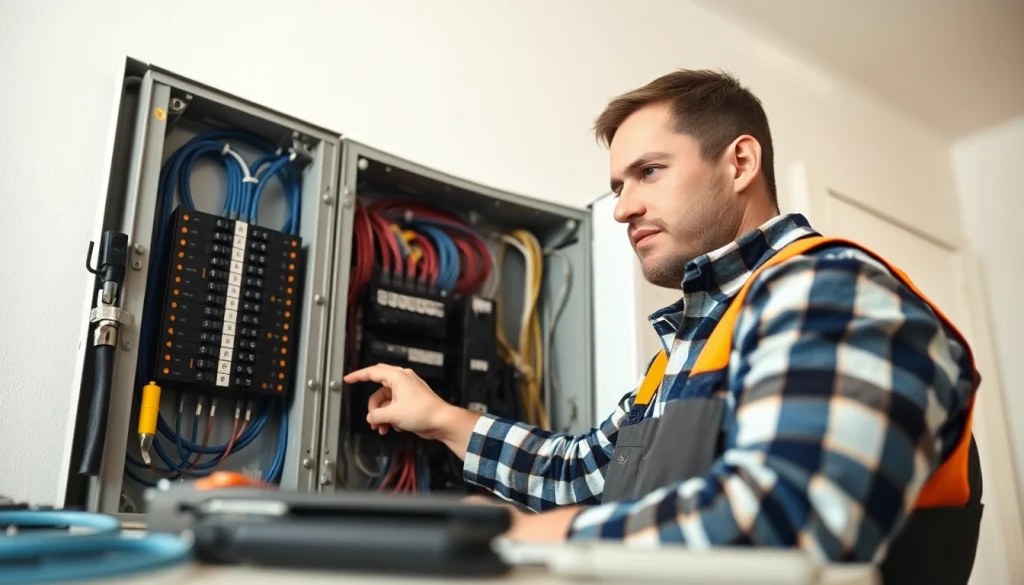
Upgrading your electrical panel is a crucial decision for homeowners looking to enhance their electrical system’s efficiency, safety, and capacity. Whether you’re planning to install new appliances, remodel your home, or prepare for future electrical needs, recognizing when and why to undertake an Electrical Panel Upgrade is imperative. In this comprehensive guide, we delve into every aspect of electrical panel upgrades, from understanding the necessity to financial planning and engaging the right professionals for the job.
What Is an Electrical Panel Upgrade?
Definition and Purpose
An electrical panel, often referred to as a breaker box, is the central hub of your home’s electrical system. It distributes electricity from the main power line to various circuits throughout your home while providing overload protection via circuit breakers. An electrical panel upgrade involves replacing an outdated panel with a newer model that typically has a higher amperage rating, improved safety features, and additional breaker spaces that can accommodate additional circuits.
Common Signs You Need an Upgrade
Recognizing the signs that your electrical panel requires an upgrade is essential for ensuring safety and efficiency. Here are some common indicators:
- Frequent Tripping of Circuit Breakers: If breakers trip often, this could signal overload and inefficiency in your panel.
- Old Fuse Boxes: Homes with fuse boxes (more than 20 years old) often require upgrades to meet modern electrical demands.
- Insufficient AMPs: Many homes still operate on 100 amps, which may not meet the needs for modern manufacturing and appliances, especially electric vehicles.
- Burn Marks or Odd Smells: Any visible damage or odor near the panel suggests potential fire hazards that warrant immediate attention.
- Planning to Add Major Appliances: If you are adding electric vehicle chargers, large HVAC systems, or other major appliances, increased capacity is likely required.
Benefits of Upgrading Your Electrical Panel
Upgrading your electrical panel offers several benefits:
- Increased Capacity: Newer panels with higher amperage allow homes to safely power more devices and appliances.
- Improved Safety: Modern panels typically have enhanced safety features, minimizing the risk of electrical fires or surges.
- Efficient Energy Distribution: Upgraded panels can distribute energy more effectively, resulting in lower energy bills and fewer outages.
- Adds Value to Your Home: Potential buyers often see a newly upgraded electrical system as an attractive feature, enhancing property value.
When to Consider an Electrical Panel Upgrade
Signs of Overloading and Issues
Overloading occurs when the demand for electricity exceeds the supply capacity of the electrical panel. If you notice flickering lights, outlets not working, or appliances that do not operate efficiently, it may be time to consider an upgrade. An electrician can conduct a load analysis to determine if an upgrade is necessary.
Modern Electrical Requirements for Homes
As technology advances, the electrical demands of homes have escalated. Outdated panels often fail to meet modern requirements, especially with the proliferation of smart devices, home offices, and electric vehicles. An upgrade ensures that you meet current electrical codes and can safely accommodate increasing energy needs.
Impact on Home Value and Insurance
Several factors contribute to your home’s equity, and having an upgraded electrical panel significantly enhances market value. Moreover, homes with modern electrical systems may qualify for lower insurance premiums, as they reduce the likelihood of electrical failures or damages.
Costs Associated with Electrical Panel Upgrades
Average Costs and Pricing Factors
The cost to upgrade an electrical panel varies significantly based on several factors, including the existing system, required amperage, and local labor rates. On average, homeowners can expect to pay between $800 and $4,000 for a panel upgrade. Key cost factors include:
- Size of the Panel: Transitioning from 100 amps to 200 amps may incur additional costs.
- Labor Costs: Professional electricians typically charge $50–$120 per hour.
- Additional Wiring or Components: Depending on your home’s layout, more wiring or circuit breakers may be needed.
- Permits and Inspections: Many localities require permits for electrical work, adding to the total cost.
DIY vs Professional Upgrades
While DIY projects can save money, upgrading an electrical panel is not a task for the untrained. The importance of professional assistance cannot be overstated, as an improper installation can lead to severe safety hazards, including electrical fires. Professional electricians provide detailed knowledge of local building codes, safety standards, and necessary inspections, ensuring the upgrade process is completed safely and efficiently.
Financing Options and Incentives
To alleviate the financial burden of an electrical panel upgrade, numerous financing options may be available. Home equity loans, credit lines, or special financing offers by electrical service companies can help manage costs. Additionally, some energy-saving upgrades come with tax credits or rebates from local governments aimed at reducing overall energy consumption.
Choosing the Right Electrician for Your Upgrade
Key Qualifications and Certifications
Hiring the right electrician is critical to ensuring a successful electrical panel upgrade. Key qualifications to look for include:
- Licensing: Verify that the electrician holds the proper licenses required by your state.
- Insurance: A reputable electrician should have liability insurance to cover potential damages.
- Experience: Look for electricians who have extensive experience handling electrical panel upgrades.
- References and Reviews: Consider customer testimonials as they provide insight into the electrician’s reliability and quality of work.
Questions to Ask Before Hiring
When interviewing potential electricians, consider asking the following questions to gauge their expertise and service quality:
- What experience do you have with electrical panel upgrades specifically?
- Can you provide references from previous clients?
- What is the estimated timeline for this project?
- Do you offer warranty coverage on your work?
- How do you handle unexpected costs or complications during the project?
Understanding Your Service Agreement
Before commencing work, ensure you have a clear understanding of your service agreement. This document should cover the scope of work, payment terms, warranties, and your rights as a homeowner. Having this information in writing helps avoid misunderstandings later on.
Maintaining Your Electrical System After Upgrading
Regular Inspection and Maintenance
Once your electrical panel upgrade is complete, ongoing maintenance is crucial. Consider arranging regular inspections to ensure everything functions correctly and identify potential issues early. Certified electricians can check the panel for wear and overheating, ensuring longevity and optimal safety.
Signs That Indicate Further Upgrading Needs
Even after an upgrade, continue observing the performance of your electrical system. Potential signs that further upgrades may be required include:
- Constantly blown fuses or tripped breakers.
- Popping or buzzing sounds from the panel.
- Fluctuations in voltage levels in your home.
Smart Upgrades for the Future
As technology continues to evolve, consider integrating smart technologies with your upgraded electrical panel. Smart monitoring devices can help track energy consumption, detect anomalies, and enhance home efficiency. Additionally, prepare your home for future expansion or installation of renewable energy systems like solar panels, which greatly benefit from a robust electrical infrastructure.
In conclusion, understanding when and how to upgrade your electrical panel is crucial for safe and efficient home management. An informed decision backed by professional consultation, careful selection of service providers, and responsiveness to system performance can lead to greater comfort, safety, and energy efficiency in your home.





